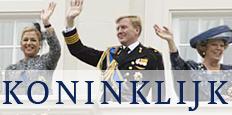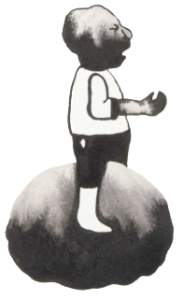 The Court has prohibited the press agency AP (Associated Press) from offering four pictures of the recent holiday of Prince Willem-Alexander, Princess Máxima and Princess Amalia in Argentina. This is the result of the judgment in proceedings that the Royal Family had brought against AP.
The Court has prohibited the press agency AP (Associated Press) from offering four pictures of the recent holiday of Prince Willem-Alexander, Princess Máxima and Princess Amalia in Argentina. This is the result of the judgment in proceedings that the Royal Family had brought against AP.
On 20 July 2009, Prince Willem-Alexander and his family organized a ‘media moment’ just before the start of their summer holidays. The media got the chance to take pictures of the family at the beach in the Netherlands. At that time, Willem-Alexander refused to disclose their holiday destination. The media moments are accessible to (professional) photographers and journalists, on condition that they respect a Media Code that was prepared by the Netherlands Government Information Service (Rijksvoorlichtingsdienst, “RVD”). This Media Code prescribes, among other things, that the media should ‘leave members of the Royal Family alone’ at times when they do not make a public appearance in their official capacity.
AP is an American press agency operating on a worldwide scale, which provides the media with pictures through a ‘satellite stream’. On 20 July 2009 a photographer of AP visited the media moment of the Royal Family. Shortly afterwards, AP published four pictures of the Royal Family’s holiday in Argentina on its satellite stream, which show a skiing and abseiling Alexander, Máxima and Amalia. AP has offered the pictures to several Dutch media. The newspapers Algemeen Dagblad and Trouw each published one picture, and several websites also published pictures without AP’s permission. Following a demand from the Royal Family, the above-mentioned newspapers have promised not to publish the pictures. Since AP did not make such a promise, the Royal Family brought preliminary relief proceedings against AP.
The Judgment of the Court
On 28 August 2009 the Court in preliminary relief proceedings ruled that AP could no longer offer the four pictures, as they represented an intrusion on the Royal Family’s privacy. It has been clear since the Caroline of Hannover judgment of the European Court of Human Rights that although public figures have to tolerate a lot of media attention, their privacy does deserve protection. However, the current judgment carries the protection of the privacy of public figures too far and it is not in line with existing case law as far as the grounds for the decision are concerned.
Reversed Test
The Court used a wrong testing method when balancing the freedom of expression and the protection of privacy. The Court wrongly took the privacy of the Royal Family, as protected by Article 8 of the European Convention of Human Rights (“ECHR”) as its starting point, and argued that the members of the Royal Family have a right to protection of their privacy during ‘private appearances’ in a public place, unless photographs show a news fact or contribute to a public debate. In its recent Karako judgment, the European Court of Human Rights has clarified that it is in fact the other way round: it is the freedom of expression that must be taken as a starting point. This right is protected by Article 10 of the ECHR, and where it clashes with the protection of privacy, the second paragraph of Article 10 is decisive for the question as to which interest must give way. By turning matters around, the Court has already set AP back one point in advance.
No Social Interest Assumed too Easily
Furthermore, the Court has wrongly assumed that the pictures were not a news fact and did not contribute to a public debate, and that AP should therefore not have offered them on the satellite stream. As a rule, it is true indeed that publications enjoy greater protection if they are socially relevant than if they are only ‘boulevard news’.
However, the Court seems to have based its opinion mainly on publications that have featured in the media, which simply concerned the holiday destination of the Royal Family, and which the Court considered not to have any news value. But there are numerous reasons why these particular photographs of the Royal Family on summer skiing holiday in Argentina could have social relevance. The family’s holiday destination may very well be a news fact, if only because the family was so secretive about it during the official media moment. Moreover, the media might well wish to publish a critical article, for example about the double standard applied by the Dutch government that urges people to spend their holidays in their own country – partly with reference to the media moment of the Royal Family – whilst the Royal Family are going on decadent journeys, about the costs of the Royal House for taxpayers, about the impact of air trips on the environment, or about deforestation connected with skiing holidays. If they would publish such articles, the media should be allowed to use these pictures without problems.
Press Agencies and Free Access to Information
The Court then wrongly assumed that AP is not allowed to offer photographs to the media if it is not clear (yet) that they have news value or contribute to public debate. I think this assumption is wrong. Press agencies cannot and do not have to know in advance whether there are media that may be able to use the information offered for a topic of public relevance. It may well be that a newspaper or a broadcaster is working on an interesting journalistic topic of which AP is not directly aware. The journalistic responsibility to decide whether or not the photographs can be used for such purposes lies with the media. As a result of the limitation imposed on press agencies by this judgment, the media could miss out on a great deal of information. However, it is generally accepted in case law that the media play the important role of ‘public watchdog’ and that the free access to information is very important. As press agencies play an important role in this freedom by facilitating the media, they should not be hindered in fulfilling this role if it can be avoided.
Media Code Not Relevant
There is good news for the press too. The Court held that the Media Code is not a ‘legally binding agreement’ between the RVD and the journalist community. The RVD has often threatened to use the Media Code in order to stop the media attending a media moment from publishing anything about (alleged) private situations of the Royal Family. However, the Court has now concluded that the Media Code contains no additional restrictions to the publication of private photographs that were taken in a public place. As a result, the media can attend the media moments without feeling restricted in their freedom to report on the Royal Family.
Conclusion
Prince Willem-Alexander and his family have already litigated quite a number of times in their battle against the media. They have regularly been successful, including in this case. However, this time the Court has struck a wrong balance between the freedom of expression and the protection of privacy, and in doing so has affected the role of press agencies in the free access to information. The reaction of the Dutch Hockey League has already made it clear that such judgments have a ‘chilling effect’. One day after the judgment, the Hockey League presented a letter to the media attending the European Championships, which stated that the members of the Royal Family had come to watch ‘as private persons’, and that such outings were not meant to be photographed. Of course it is not sure that the House of Orange had anything to do with this letter, but the warning was certainly out of place. The press must be allowed to inform the public if members of the House of Orange have come to cheer an Orange sports team.

